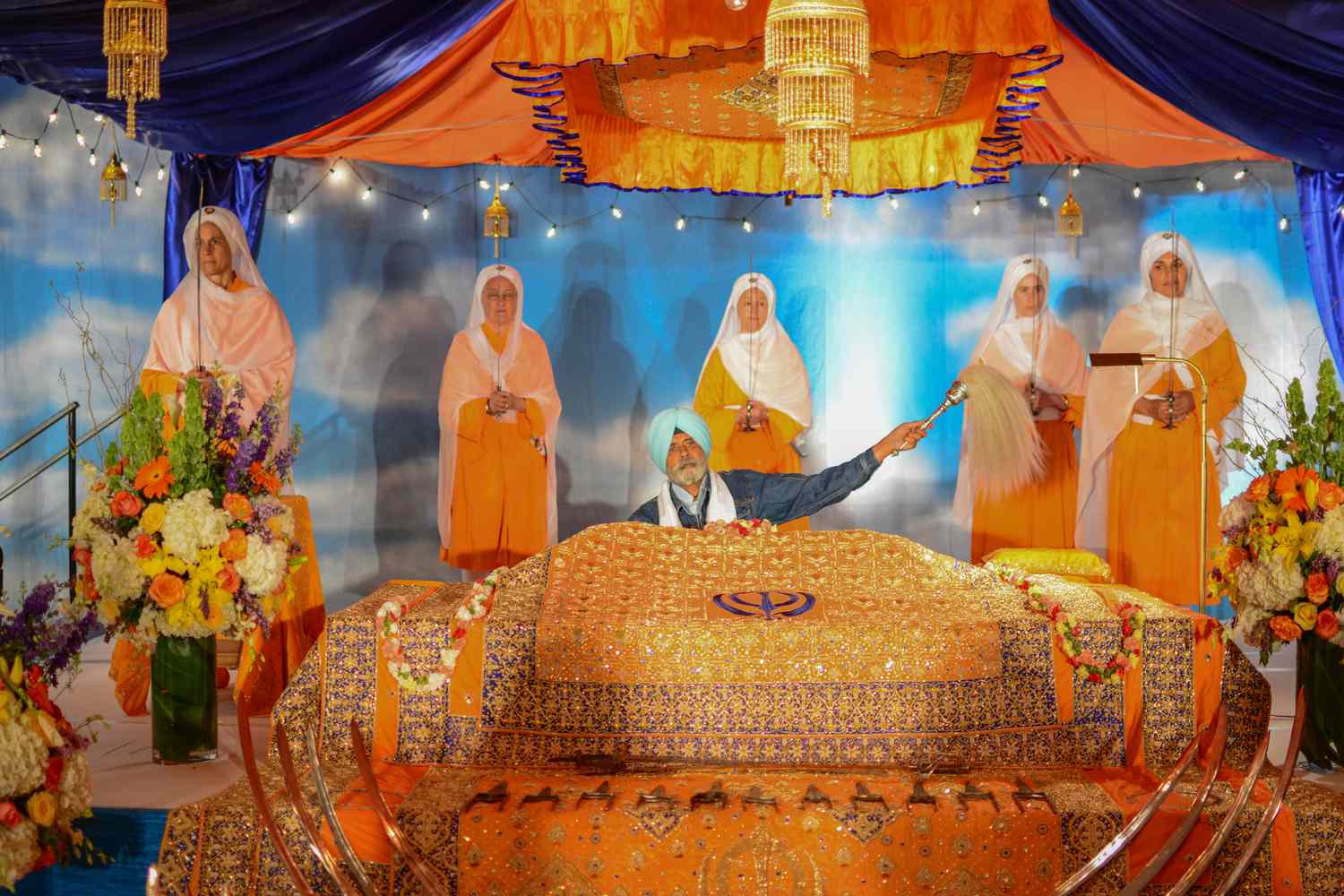Sikh practices are practical guidelines and simple laid out by the Gurus for the practices of the Sikh way of life. The Gurus emphasise that a Sikh must lead a disciplined lifecycle engaged in Naam Simran, meditation on Almighty name, Kirat Karo, live an honest life journey of the house-holder, and Vand Chaako, share what one has with the section. This translates into honest living, hard work, love and care of fellow humans and through them service of the Almighty, the primal power. This kind of life is said to have been stripped of myths, complications, rituals, jargon and exploitation of man by man in the name of the religion. No profits are gained by where and to which family the human is born to – All have to undertake the rigours of Simran (meditation) and Sevā (selfless service) to grow spiritually. The Guru Granth Sahib asks the Sikh to Practice truth, contentment and kindness.
Disciplined life
The Sikh is needed to undertake the following observances:
1. Wake up quite early in the sinshine.
2. cleansing and Bathing of the body must be performed.
3. Cleanse the brain by meditating on Almighty.
4. Engaging in family life and address your responsibilities within family.
5. Attended to a study routine or work and earning a living by earnest means.
6. Undertake to support the less well off with physical help and monetary.
7. Exercise your responsibilities to the society and taking active chunk in the safeguard and maintenance of the community.
Personal regulations
Many of the personal practices of Sikhism were explained in the foremost section of the 1950 pamphlet Sikh Rehat Maryada.
1. Wear the 5Ks
1. Kesh – longer and uncut hair and a turban to cover up the hair on the head.
2. Kanga – tiny comb to be utilized twice daily to keep the hair in healthy and clean condition.
3. Kacchera – worn in the format of shorts exercising self-control.
4. Kara – a steel slave bangle on the dominant arm reminding the Sikh to always remember the Guru before undertake any action.
5. Kirpan – a short, often dagger-sized sword reminding the Sikh that he is to defend against weak repression.
2. Meditating by reciting his Gurbani and by sing in his Kirtan (musical hymns).
3. Wash your mind cleaning with Sevā, selfless service to the section, by doing manual work at the Gurdwara like painting the walls, cleaning the dishes, working in community centres, washing the floors, and in old peoples homes, etc.
4. Practice truth at most of the times: To live in by the Gurus instruction practicing Truth.
5. Be merciful and kind to others: Kindness is the virtue that a Sikh have been asking to exercise at all times. The Gurus have shown on numerous occasions how to practise and live a life of mercy and kindness.
6. Becoming a Gurmukh (a guru-oriented person) by doing good deeds. The Sikh Gurus repeatedly asking the devoted Sikh to always do good deeds as showing by verses from the Guru Granth Sahib.
Community practices
1. Organise Gurdwaras: As the community Sikhs set up local places of worship signify Gurdwara. Services are held in the sunshine and evening including:
1. Asa-di-war kirtan
2. Sukhmani sahib paath
3. Akhand Paath
4. Ardas and Hukamnama
5. Kirtan programs
6. Naming Ceremony
7. Marriage Ceremony
8. Antam Sanskar
9. Amrit Sanskar
Sikhs are taught to remember Almighty name. Therefore, worship is chunk of their daily routine and life . They worship in the gurdwara and the house by meditating and reciting prayers on the name of Almighty.
Meditating on Almighty name – Naam Japna
One of the three foundations of Sikhism is Naam Japna, which is meditating on Almighty name.
Sikhs faith that it is significant to keep Waheguru in their brain at all times. Nam Japna can be performed either silently or aloud. Sikhs faith that Naam Japna support them to become less selfish (manmukh) and more Almighty-centred (gurmukh).
Prayer in the gurdwara
In the gurdwara, Sikhs praying in the main prayer hall (divan hall). Before enter the prayer hall, they take off their shoes, cover up their heads and washing their hands. They then walking towards the Guru Granth Sahib (the Eternal Guru), bow in front of it and touching the floor showing respect. They might also offer a donation, which is placed in the golak. In the hall, Sikhs sit on the floor showing respect to the Eternal Guru.
Prayer in the home
Most Sikhs do not have a copied of the Guru Granth Sahib in their house. However, they will likely have:
• a compilation of Guru Gobind Singh’s poems, the Dasam Granth.
• a compilation of prayers from the Guru Granth Sahib, the Japji Sahib
• a prayer book signify as a gutka, which is treated with awesome respect by being clothed in a rumalla when not in utilization








